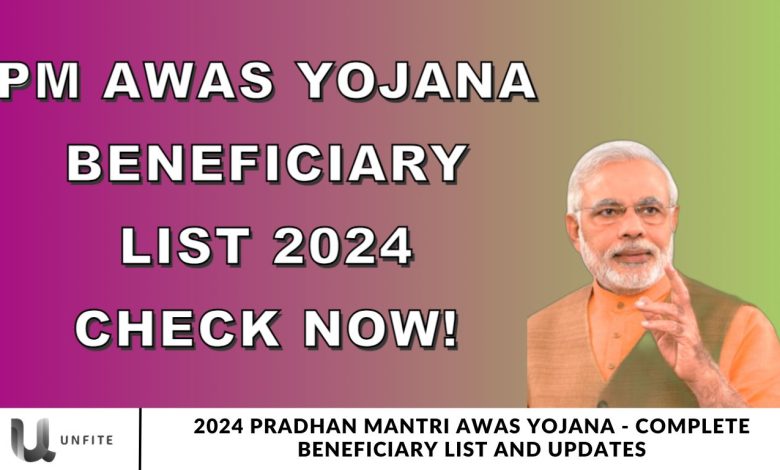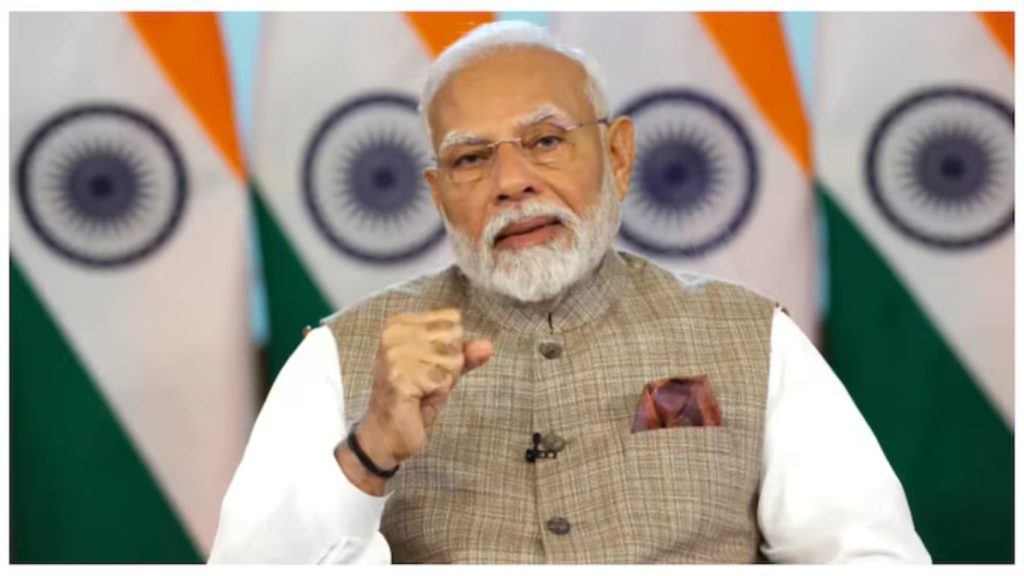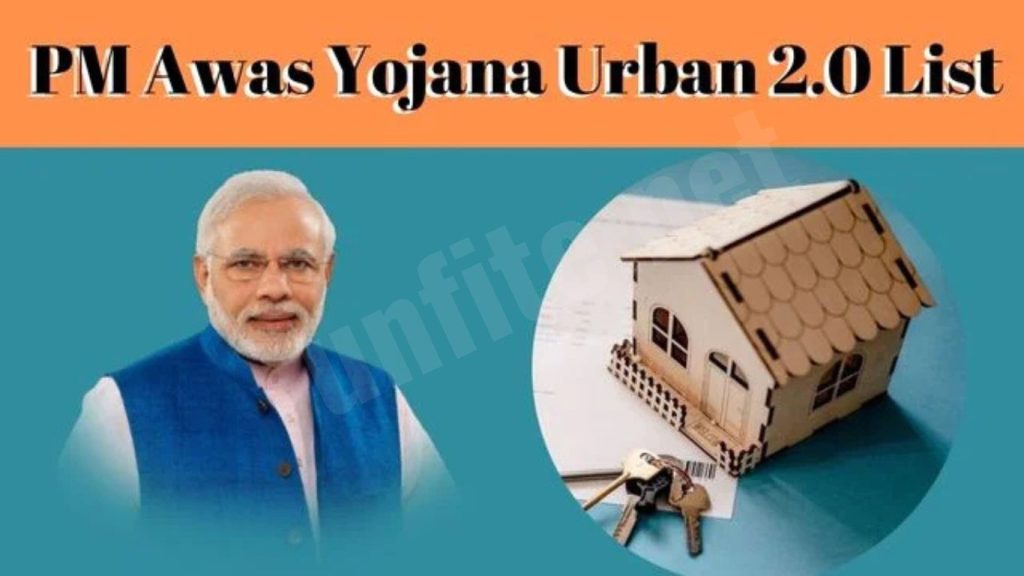2024 Pradhan Mantri Awas Yojana – Complete Beneficiary List and Updates

The Pradhan Mantri Awas Yojana 2024, launched by Prime Minister Narendra Modi in 2015, aims to provide financial assistance to ensure that all impoverished families receive a pucca house. Numerous low-income families apply for this scheme each year, and the application process for the PM Awas Yojana has begun for 2024.
In this article, we will provide detailed information about the Pradhan Mantri Awas Yojana 2024. You will learn how to apply for the scheme and access the beneficiary list. Let’s dive into the details!
What is Pradhan Mantri Awas Yojana 2024
The Pradhan Mantri Awas Yojana 2024, initiated by the Government of India, is a vital program designed to help the underprivileged achieve their dream of homeownership. The scheme aims to construct two crore houses in urban areas and three crore pucca houses in rural areas by 2024.
Families applying under this scheme can receive financial assistance of up to Rs 1,20,000, provided in three installments. The first installment supports the construction of the house foundation, the second installment is for building the walls, and the third installment is designated for installing the roof.
Moreover, families lacking a toilet will be eligible for an additional Rs 12,000 to help with its construction.
This financial aid will be disbursed to applicants through Direct Benefit Transfer (DBT), ensuring that only those on the Pradhan Mantri Awas Yojana beneficiary list can receive it.
Some significant points of Pradhan Mantri Awas Yojana
Beneficiaries:
- Economically Weaker Sections (EWS): This category includes families with meager incomes who may struggle to afford necessities. They are eligible for housing assistance under government schemes.
- Lower Income Group (LIG): Families in this group earn slightly more than EWS families but still fall below the average income level needed to afford housing without assistance.
- Below Poverty Line (BPL): This term refers to families whose income is so low that they cannot meet basic needs like food, clothing, and shelter. In rural areas, BPL families are targeted for housing support to improve their living conditions.
Subsidies:
Urban Areas:
- EWS families can receive up to ₹1.5 lakh in subsidies. This financial aid helps them afford housing construction or purchase.
- LIG families can receive up to ₹2.5 lakh, which is more substantial support due to slightly higher income levels than EWS families.
Rural Areas:
- BPL families are eligible for subsidies of up to ₹1.2 lakh. This amount is intended to help them secure adequate housing in rural locations where living conditions may be more challenging.
Housing Facilities:
- Minimum Size: The scheme specifies that any house built or improved must have at least 20 square meters of living space. This size ensures that families have a primary, livable environment.
- Essential Facilities: The initiative emphasizes the need for basic amenities such as:
- Water: Access to clean drinking water is crucial for health and sanitation.
- Electricity: A reliable electricity supply is necessary for lighting, heating, and powering appliances.
- Toilets: Having proper sanitation facilities is essential for hygiene and overall well-being.
Benefits of Pradhan Mantri Awas Yojana
- Construction of Durable Housing for the Underprivileged
- Enhancement of Living Standards
- Creation of Employment Opportunities
- Boost to Economic Development
Eligibility for Pradhan Mantri Awas Yojana

To apply for the Pradhan Mantri Awas Yojana (whether Rural or Urban), families must meet the following eligibility criteria:
- The family’s annual income must be below ₹3,00,000.
- No family member should hold a government job.
- All family members must live in inadequate housing.
- The family must have a BPL card confirming their status as below the poverty line.
Primary documents for applying Pradhan Mantri Awas Yojana
Aadhaar Card
- Explanation: The Aadhaar card is a unique identification number issued by the Government of India. It serves as proof of identity and address for residents.
- Relevance: It helps verify the identity of applicants and ensures that the benefits reach the correct individuals.
Income Certificate
- Explanation: This document certifies an individual’s or family’s annual income, usually issued by a government authority.
- Relevance: Eligibility for various schemes, including the Pradhan Mantri Awas Yojana, which targets families with low incomes, must be determined.
Proof of Residence
- Explanation: This certificate verifies the applicant’s residential address. Local authorities can issue it, and it may include utility bills or other documents.
- Relevance: It ensures that the applicant resides in the area where they are applying for housing assistance, confirming their eligibility based on location.
PAN Card
- Explanation: The Permanent Account Number (PAN) card is issued by the Income Tax Department and serves as a unique identifier for individuals and entities in India.
- Relevance: It is used for tax purposes and helps in verifying the financial status of applicants, ensuring transparency in financial dealings.
Documentation for Absence of Housing
- Explanation: This refers to documents proving that the applicant does not own any residential property. This could include affidavits or declarations stating the current living conditions.
- Relevance: This documentation is essential for applicants who are eligible for housing assistance under the scheme, as it ensures that benefits are provided to those genuinely in need.
Bank Passbook
- Explanation: A bank passbook contains records of all transactions made by the account holder and serves as proof of bank account ownership.
- Relevance: Direct benefit transfers (DBT) of financial assistance are required to ensure that the subsidy reaches the applicant’s correct bank account.
How do I apply for Pradhan Mantri Awas Yojana?
Applicants have the option to apply for the Pradhan Mantri Awas Yojana both online and offline. Although the online application process for 2024 has been temporarily halted, you can still use it offline.
To apply offline, follow these steps:
- Visit your nearest panchayat office.
- Obtain and complete the application form available at the office.
- Fill in all required information and attach photocopies of the necessary documents.
- After submitting your application and documents, they will be reviewed. If all the information is accurate, your name will be included in the Pradhan Mantri Awas Yojana beneficiary list.
How do you check Pradhan Mantri Awas Yojana’s 2024 list?
If you have applied for the housing scheme and want to check your status on the beneficiary list, follow these steps:
- Visit the Official Website: Click the link below to access the official Pradhan Mantri Awas Yojana (Rural) website.
- Locate Awaasoft: On the homepage, find and click on the Awaasoft option.
- Select the Report Option: A new menu will open. Click on the Report option.
- Access Social Audit Reports: After clicking on Reports, a new page will appear. Scroll down to the Social Audit Reports section.
- Choose Beneficiary Details for Verification: Click on the Beneficiary Details for Verification option.
- Enter Your Information: You will be redirected to the PM Awas Yojana list page. Here, select your state, district, village, and area from the dropdown lists.
- Complete Captcha and Submit: Fill in the captcha code and click the Submit button.
- View the List: After submitting, the beneficiary list will be displayed. If your name appears, you are eligible for financial assistance to build a pucca house.
What is Pradhan Mantri Awas Yojana?
The Pradhan Mantri Awas Yojana (PMAY) is a flagship housing initiative launched by the Government of India in 2015. Its primary objective is to provide affordable housing for all by 2022, ensuring that every Indian citizen has access to a decent living space. This ambitious scheme is designed to fulfill the housing needs of the economically weaker sections (EWS), lower-income groups (LIG), and families living below the poverty line (BPL).
Objectives of the Pradhan Mantri Awas Yojana
The main objectives of PMAY include:
- Affordable Housing: To offer financial assistance for the construction or renovation of pucca houses (permanent homes) for low-income families.
- Enhancing Living Standards: To improve the quality of life by providing basic amenities, such as clean water, sanitation, and electricity, alongside housing.
- Urban Development: To develop urban infrastructure and promote sustainable housing development in cities and towns across India.
- Economic Growth: To stimulate economic growth through increased employment opportunities in the construction sector, leading to a multiplier effect on the economy.
Target Beneficiaries
The Pradhan Mantri Awas Yojana specifically targets three main beneficiary categories:
- Economically Weaker Sections (EWS): Families with an annual income of up to ₹3 lakh who require assistance in securing housing.
- Lower-Income Groups (LIG): Households earning between ₹3 lakh and ₹6 lakh annually, seeking affordable housing solutions.
- Below Poverty Line (BPL): Families classified under the BPL category who are eligible for additional financial assistance to build or upgrade their homes.
Overview of Housing Goals for Urban and Rural Areas
PMAY aims to achieve significant housing milestones across urban and rural areas:
- Urban Areas: The scheme aims to construct two crore pucca houses in urban regions by 2024. This initiative focuses on providing affordable housing solutions in densely populated cities, thereby addressing urban migration and housing shortages.
- Rural Areas: The goal for rural housing is to provide three crore pucca houses by 2024. This includes building homes with essential facilities to uplift the living standards of rural families and ensure that they have safe and secure housing.
Eligibility Criteria for Applicants

To ensure that the benefits of the Pradhan Mantri Awas Yojana (PMAY) reach the intended beneficiaries, applicants must meet specific eligibility criteria. Below are the critical requirements for individuals and families interested in applying for this housing scheme.
Income Limits for EWS and LIG
The eligibility for financial assistance under PMAY is primarily determined by the applicant’s annual income, categorized as follows:
- Economically Weaker Sections (EWS): Families with a total yearly income of up to ₹3 lakh fall under this category. These families are the primary target for the housing scheme, which aims to provide them with affordable housing solutions.
- Lower-Income Groups (LIG): Households with an annual income ranging from ₹3 lakh to ₹6 lakh qualify as LIG. This group also benefits from the financial assistance offered under PMAY but at a different scale.
Required Documents for Application
To apply for the Pradhan Mantri Awas Yojana, applicants must submit several essential documents. These typically include:
- Aadhar Card: A valid proof of identity and address for all family members.
- Income Certificate: To verify the applicant’s annual income, which helps determine eligibility under the EWS or LIG categories.
- Residence Certificate: To establish the applicant’s current place of residence.
- PAN Card: A permanent account number card to identify taxpayers in India.
- Documents Proving Lack of Housing: Evidence, such as affidavits or self-declarations, that the applicant does not own a pucca house.
- Bank Passbook: To facilitate the disbursement of funds directly to the beneficiary’s account.
Conditions Related to Existing Housing
Applicants must meet specific conditions concerning their current housing status to qualify for PMAY benefits:
- No Existing Pucca House: The applicant or any family member should not own a Pucca house in their name, whether in urban or rural areas. This condition ensures that the scheme specifically assists those in genuine need of housing.
- Current Living Conditions: This scheme prioritizes families residing in temporary or dilapidated structures, such as kaccha houses (non-permanent houses). Applicants are required to provide proof of their living conditions during the application process.
PMAY-G Beneficiary List
The Pradhan Mantri Awas Yojana Gramin (PMAY-G) aims to provide affordable housing to the rural poor. As part of the larger Pradhan Mantri Awas Yojana, this scheme focuses on improving rural living conditions by offering pucca houses to families residing in dilapidated or kutcha homes.
This guide outlines how to quickly check the PMAY-G beneficiary list, allowing for quick verification of eligibility and status through the PMAYG.nic.in and reporting portals.
Frequently Asked Question
What is the Pradhan Mantri Awas Yojana (PMAY)?
PMAY is a government initiative aimed at providing affordable housing to economically weaker sections, lower-income groups, and below-poverty-line families in urban and rural areas. The goal is to ensure housing for all by 2024.
How can I check the PMAY 2024 Beneficiary List?
You can check the beneficiary list by visiting the official PMAY website, selecting the relevant report under the “AwaasSoft” section, and entering details like your state, district, village, and area to view your status.
What is the financial assistance provided under PMAY-G 2024?
For rural beneficiaries, PMAY-G offers financial assistance of up to ₹1.2 lakh in three installments. Additional funds of ₹12,000 are provided if the family lacks a toilet facility.
How do I apply for the Pradhan Mantri Awas Yojana 2024?
Applications for PMAY 2024 can be made online through the official PMAY portal or offline by visiting your nearest Panchayat or municipal office. You’ll need to submit the necessary documents for verification.
When will the PMAY 2024 beneficiary list be updated?
The beneficiary list is regularly updated on the official PMAY portal as applications are reviewed and approved. Check the website for the latest updates on your application status.
How is the financial assistance under PMAY disbursed?
The assistance is transferred directly to the beneficiary’s bank account through DBT (Direct Benefit Transfer) in multiple installments based on the construction stages (foundation, walls, roof).
What are the housing specifications under PMAY 2024?
Under PMAY, the house must be at least 20 square meters in area and include essential amenities like water, electricity, and sanitation facilities.
What should I do if my name is missing from the PMAY 2024 list?
Suppose your name is not on the list, but you meet the eligibility criteria. In that case, you can contact your local Panchayat or municipal office for assistance or reapply through the official PMAY portal.
Conclusion
The 2024 Pradhan Mantri Awas Yojana (PMAY) remains a pivotal initiative aimed at improving housing conditions for economically weaker sections, lower-income groups, and rural families across India. By offering substantial financial assistance for the construction of pucca houses, the government is striving to ensure affordable housing for all by 2024.
Applicants must stay updated with the PMAY beneficiary list to track their eligibility and status. By following the official processes, families can benefit from this transformative scheme, elevating their standard of living while contributing to the nation’s economic development.




